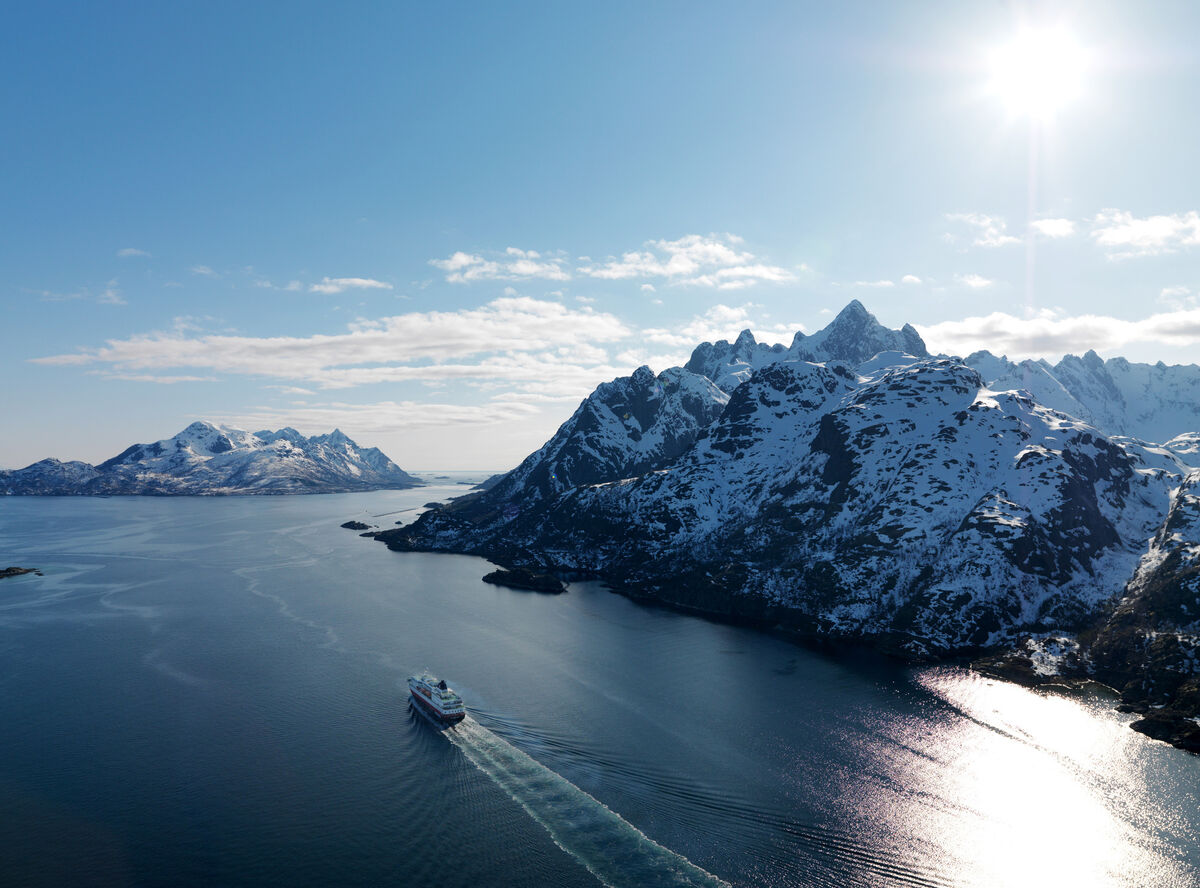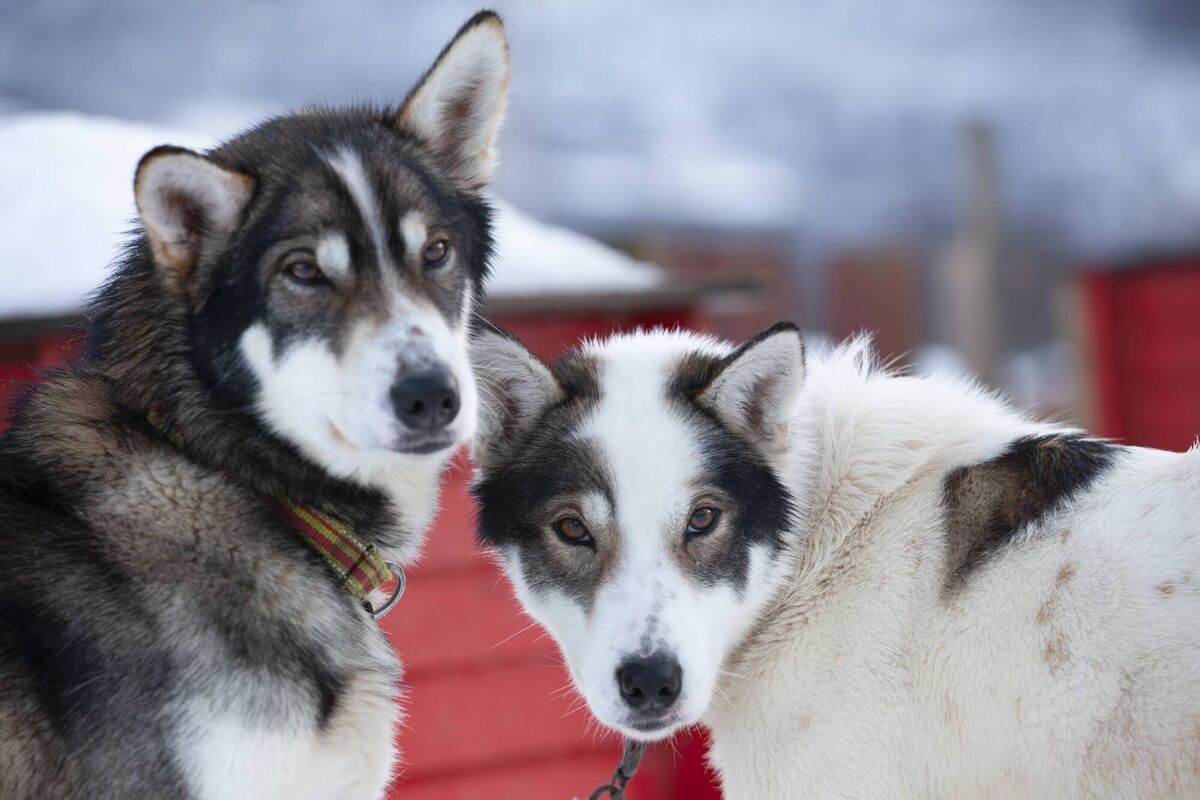Postcards from the past: John Creedon recounts an unforgettable journey in Norway

John Creedon, at the Norway-Russia border
As with life itself, travel is often more about the journey than the actual destination. I’ve been on countless road-trips — from journeying towards the Temple of the Tooth in Sri Lanka in an over-laden, whining tuc-tuc, to a rickety bus breaking down while crossing a dry riverbed in rural Malawi — where the highlights often occur en route. Nowhere, however, stands out more than one trip to Norway...
Ten years ago, I was spending my Sundays as a judge on . Having already filmed a number of travel reports for , I was intrigued when they asked me to travel to the Arctic Ocean — and back — in the six days between the two editions of the talent show. So, with the all-clear from RTÉ, I hopped in a taxi for Dublin Airport to meet the film crew. We were all new to each other, but within a week we were family.
Norway has the second-longest coastline in the world, just behind Canada. It’s not a huge country, but just look at that map with its squiggly coastline and all those inny-and-outty bits — between fjords, islands and bays it boasts more than 25,000km of places to catch a fish. Getting to the top of Norway can be complicated. A two-hour flight to Oslo was followed by another two-hour flight to the small city of Tromsø, 350km north of the Arctic Circle — with a temperature of -16°C outside and a comfortable -2°C inside our pick-up jeep. Our driver warned us of the dangers of frostbite — advising us to tap the tips of each other’s noses at regular intervals. Tapping your own nose is no good, you see, as you may confuse the feeling in your fingertip with your nose. But if someone touches your nose and you can’t feel it, you’re in trouble. I mentioned that my eye balls felt gooey as if the my tears are freezing. “They are,” he replied. “That’s your Arctic make-up." I checked in the wing mirror of the jeep, and sure enough, there was Ernest Shackleton looking back at me with an icy stare.
We drove for another few hours to our base camp where our expedition leader, Belinda, was awaiting with my XXXL survival suit and her team of dogs. Sez I, “Belinda, I might squeeze into the suit, but them five créatúrs haven’t a hope of pulling me for miles across the frozen tundra.” She assured me they would and showed me the ropes. “The first thing you need to know about the ropes is that you won’t be using them,” she explained. "Hold the reins, but you can only influence the direction by shifting your weight from one footboard to the other. To slow down, you simply apply this claw brake here, by standing down on it. Whatever you do, don’t fall off, or the dog team will keep going and you’ll be stranded until we find you. More importantly, we may never find the dogs again. Remember, they’re Alaskan huskies, not homing pigeons!”.
I fell off. However, I managed to hang on to the reins while being dragged on my belly through brush and briars. I hadn’t the upper-body strength to pull myself back on board a flying sled but I did muster up the strength to do the next best thing: “BE-LIN-DA! BE-LIN-DA!!!” I shouted. Fortunately, my absence had been noted and she was back to unravel two teams of yelping huskies, while I caught my breath and took in the actual meaning of ‘survival suit’.
Eventually, I found my balance and my dignity and relaxed into the landscape. Apart from the panting of the dogs and the sluwhooosh of the sled’s runners, there was an uncanny silence. I’m talking about that implosion of silence you encounter in a sound-proofed studio. No breeze, just one low-glow yellow moon illuminating hundreds of miles of empty stillness to the North.
Lodgings for the night were provided by Ruar, a member of the Sami people who have been sprinkled across the northern reaches of Norway, Sweden, Finland and Russia long before these national borders were drawn. Ruar’s lavvu yurt had an open fire right in the middle and as we warmed up, he removed his fur hat to reveal a head of red hair. I told him that rua was an Irish word for red. “Is same in Sami language. I am called Ruar because I have red hair when I am baby,” he replied.

Early the next day, we boarded the MS Nordkapp, a Hurtigruten ship which travels from Bergen to Kirkenes. It’s less of a luxury liner and more like a top-class, modern ferry, carrying freight and up to 700 passengers. We ploughed northwards through ice floes. Every few hours the vast whiteness was punctuated by the twinkle of a tiny coastal community, their window panes reflecting the low sun into our eyes as if to say "Over here! We’re over here".
That evening, shattered, I was rocked to sleep by the ship’s slow, heavy heave, my snoring matched by the rhythmic creaking of a million nuts, bolts and rivets. However, I leapt up suddenly in the middle of the night as the captain sounded the siren and killed the engines. No, not an iceberg, but the Northern Lights! To say it was a hugely dramatic display would be an exaggeration, but to stand on the deck amid the silent Arctic Ocean and witness this ever-changing, glowing green phenomenon against an ink-black sky sprinkled with stars was awe-inspiring. I genuinely had a lump in my throat as I considered the majesty of this cosmos against our petty arguments and international disputes. It was probably the most romantic moment I’ve ever shared with three other unshaven men.
Our journey continued, finally rounding the North Cape, once regarded as the last view of Europe by Arctic explorers of old. Early the next morning, bleary-eyed, we disembarked at the small town of Kirkenes on the Russian border. We were now 400km inside the Arctic Circle, where ‘twas actually Baltic (a record low of -41°C was recorded here in 1999).

The year of my visit, the winter of total darkness ended on January 15, when the sun peered over the horizon at 10.50am — setting just 38 minutes later. Locals coming out of winter must have blinked like kids coming out of a cinema matinée. But here we were a few weeks later with the luxury of three hours' filming time per day. We revved our way on snowmobiles across the whiteness to the edge of Barents Sea, where a rib whizzed us out to where the ice floes bob in the freezing black water. This was going to be my test — I was going to swim with the fishes.
I had a survival suit, but Anders, our diver and team leader sported a wet suit and oxygen tanks.
“Polar bears aren’t common in these parts, but they have been sighted, so we won’t hang about,” he said.
“How am I gonna get in?” I asked Anders.
“Sit on the edge of the rib and lean back,” he replied.
“The ice is wafer-thin at the edge but I’ll whip you backwards onto the floe.”
And so he did as I lay there like an upturned beetle. It wasn’t a case of getting up and diving in either. With one push, I was slip-sliding along the ice into the freezing blackness of the Barents Sea!

They say your past often flashes before your eyes at the moment of death. I hadn’t time to be thinking about it. Every now and then bubbles would break the surface beside me. No, not a case of nervous flatulence on my part, nor a walrus, but diving sea-birds. Once our cameraman Mark was satisfied that he had his shots, I was hauled aboard while Anders joined the diving birds underwater to return with the deadliest catch, king crab. Within a few hours we were back in his house with the crab in his pot. Flatbreads, garlic mayonnaise and crab meat were washed down with Chablis. It was probably the whitest meal I’ve ever had!
Homeward bound and despite the frigid temperatures at the airport, the propeller plane with 40 passengers on board, was up and away from Kirkenes to Tromsø. Arriving in Oslo, we were informed that Dublin Airport was closed due to heavy snowfall and -5°C temperatures (positively balmy compared to Kirkenes). As a result, our flight was diverted to Heathrow where on arrival, we were told that all Irish airports had now closed — with my date less than 24hrs away! Belfast City Airport thankfully re-opened and I was ordered to get to Stanstead, which I reached by fare-dodging on a bus from one airport to the other. What could I do? London was never on my itinerary and I had no sterling coins, just Kroner and Euro and no time for the Bureau de Change. Luckily, the production office had left train tickets in Belfast for me and soon I was pulling in to Dublin’s Connolly Station, where a limo was waiting to ferry this filthy fish-scented survivor out to Ardmore Studios in Bray. Just in time for a shower, a shave, and a show. Yes, sometimes it’s the journey more than the destination.
* The final episode of airs on Sunday, 6.30pm on RTÉ One, while John’s book , published by Gill Books, is out now.






